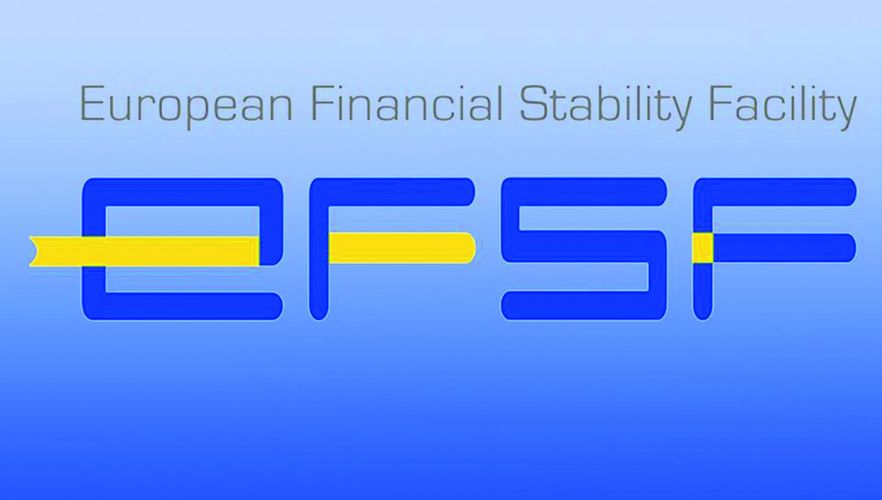The European Stability Mechanism/European Financial Stability Facility is a curious institution. Formed in the early months of the eurozone debt crisis to provide financing to unstable member states, it can often, as well as big, be almost uninspiringly boring.
Most of the time, it brings a new meaning to words like “rigidity” and “procedure”, publishing and then following through on an issuance plan every quarter in a way that can perhaps only be described as “Germanic”.
When the time comes to print, the ESM/EFSF ships out requests for proposal, drawing up first a long list of potential underwriters, and then whittling that down to a far shorter list. By then, the wise men (and a sole woman) sitting on its board of governors have a clearer picture of what prints are likely to suit the market on any given date.
Its prints, on almost every occasion, are brutally and simplistically effective: uneventful affairs whether issued into markets being buttressed by bulls or obliterated by bears.
The Luxembourg institution’s research team is widely respected, taking care to ensure that each sale tests the right portion of the yield curve. “They read the market well, and each print goes through a very structured process,” said Pierre Blandin, head of SSA debt capital markets at Credit Agricole.
“There is an RFP and a short list of banks, allowing them to see what maturity fits their needs and also the needs of investors.”
Moreover, they tend to take a long view on tenors and maturities that echoes the thinking of national governments.
“EFSF has an intelligent way of thinking about their access to the market that in some ways echoes the way sovereigns operate,” said Lee Cumbes, head of SSAR origination, EMEA, at Barclays.
By laying out their issuance calendar well in advance, they allow leading institutional investors “to prepare their portfolios and offer feedback as to the products they want to buy”, Cumbes said. The ESM/EFSF is also willing to think far outside the box. If you’re looking for plain-vanilla five-year maturities, they are are happy to comply. On other occasions they are more than happy to test shorter sections of the curve.
Every so often, though, this lumbering behemoth surprises everyone, launching a print that no one had expected, and which looks decidedly daring, offering a gentle frisson of danger. Take the Aa1/AA/AA rated institution’s decision in May 2015 to print a blend of two and 30-year notes, raising €2bn from its sale of October 2017 notes and €750m from February 2045 print. It was a relatively rare dual-tranche tap, in this case of existing 2017 and 2045 bonds.
It was also a print that divided opinion. Some labelled it innovative; others saw the determination to press ahead with a dual-tranche tap as misguided, and even downright perilous. Launched into a market convulsed by volatility, it could have gone horribly wrong, had German bunds not tightened by 7bp that day.
The ESM/EFSF’s head of funding Siegfried Ruhl stressed the importance of printing rather than postponing: stabilising the market, he said at the time, was “part of our responsibility”.
There was execution risk, he admitted, but it was an “acceptable” level of risk. Yet bankers scratched their heads over the deal, conflicted over whether it was far-sighted effort to calm and soothe skittish investors, or a ham-handed print jammed into an ultra-defensive and volatile market. Why not simply print a good, short, benchmark trade that would have done an equally manful job at underpinning and reinforcing confidence. So much for the “boring” tag.
Will an institution needing to raise just €1bn more this year (all of it set to issued in the final quarter) and around €14bn in 2016, be willing to sail quite so close to the wind, the next time it comes to market?
That’s hard to say. The ESM/EFSF typically gives a lot of thought to ensuring that, at least in its own mind, it prints the right maturity that addresses the right portion of the curve.
“They have an ongoing interest in tapping the longer end of the curve,” said Credit Agricole’s Blandin. “They have shown a lot of flexibility in adjusting to market conditions.”
Likewise, they have also demonstrated a certain level of willing flexibility when adjusting to market conditions, appearing equably content whether issuing in bull markets (such as the months following the January unveiling of the ECB’s quantitative easing programme) or bear markets (such as bond market rout of late April–early May).
It is also willing to test unfashionable portions of the bond curve, where others fear to tread (again, underlining a willingness to briefly cast off its “boring” tag). Take its €2.25bn, 4-1/2-year benchmark bond maturing November 2019, issued May 27. Not only did that print prove irresistibly juicy for a long four-year note, dragging in orders of €3.6bn, but it succeeded in injecting confidence in a sagging market.
Barclays, Credit Agricole and Societe Generale were bookrunners on that print, another successful print from a curious European agency that can be uninspiringly boring every day of the month, yet can surprise you at the drop of a hat.
To see the digital version of this report, please click here
To purchase printed copies or a PDF of this report, please email gloria.balbastro@thomsonreuters.com

